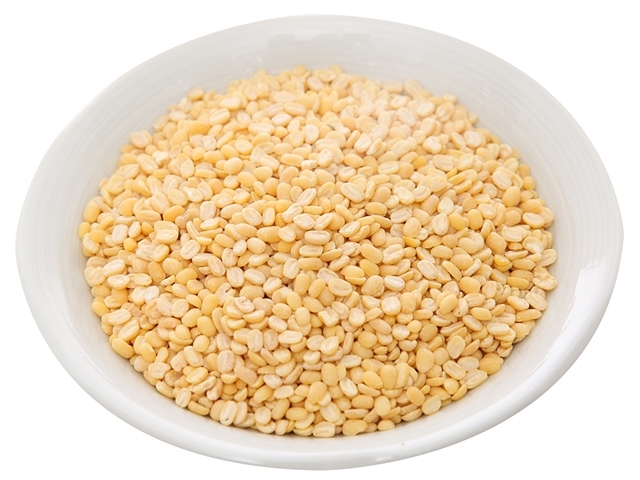 |
|
Different from the past, housewives make white trôi and chay cakes, many people now a day are interested in making colourful trôi and chay cakes to worship their ancestors. Photo suckhoephunu.vn |
Traditionally, Chinese people do not cook for three days from the third lunar day of the third lunar month, they only eat cold food to remember a hero named Jie Zhitui who lived in the 7th century BC.
Legend has it that Jie was so considerate that to feed his starving lord, he cut flesh from his own thigh to make soup to relieve his hunger.
His sacrifice was later forgotten until his lord wanted Jie back in the fold, so he started a forest fire to smoke him out of hiding. Jie refused to leave and died.
The lord felt so aggrieved that he asked his troops to build a temple to Jie while asking local people not to cook for three days and only eat cold food to remember him. These days later became known as Tết Hàn Thực (Cold Food Festival), which falls on Thursday, the third day of the third lunar month.
Although sourced from the Chinese legend, the festival in Việt Nam carries a different meaning, with days that people from across the country try to return home to join their family to clean and decorate their ancestral graves.
When at home they put these cakes on their altar to worship their ancestors, wishing for a safe and happy year to come, researcher Nguyễn Ánh Hồng from the Academy of Journalism and Communication.
 |
|
A woman in Hà Nội puts a tray of white trôi and chay cakes on her altar on the main day of the festival on the third day of the third lunar month. Photo vtv.vn |
Made from fragrant glutinous rice, these cakes together with traditional bánh chưng (square cake) and bánh giầy (round cake) reflect Việt Nam’s long wet rice civilisation, Hồng said, noting however that Vietnamese do not have to abstain from cooking during these days like the Chinese.
The tradition of making these cakes has existed in the country for a thousand years across the nation, Hồng said.
She said the pure white trôi and chay cakes were also part of the Vietnamese legend of Mother Âu Cơ.
Trôi cake represents the 50 eggs hatched to become 50 female children following Mother Âu Cơ to open land in the mountains while chay cake represents the other 50 eggs hatched to become male children to follow their Father Lạc Long Quân that went to the sea and expanded the borders to build a thriving country.
Housewife Nguyễn Bích Liên, 75, in the northern city of Ninh Bình’s Tam Điệp District said ingredients to make bánh trôi include 1kg of wet glutinous rice, 100g of green beans, 5g of vanilla, two spoonfuls of arrowroot powder, white sugar, dried molasses and coconut threads.
 |
|
Kicker: Green bean is main ingredients for the cakes’ dumpling apart from coconut threads. Photo bachhoaxanh.com |
“I grind the rice when wet and let it half dry and cut it into pieces before shaping it into ping pong balls and grind the green beans well and shape them into smaller balls like the thumb tip to be the cake’s dumpling,” Liên said.
Like Liên, many housewives make the cakes at home while many others buy them.
Phạm Xuân Thanh, a shop owner in Hà Nội, said his shop specialises in selling these cakes and different sorts of sweet desserts such as chè đỗ xanh and chè đỗ đen.
He said he had recently received hundreds of orders from Hanoians and other provinces to buy trôi and chay cakes for the festival.
“We ordered hundreds of kilos of nếp cái hoa vàng (top quality glutinous rice) ready to supply increasing demand these days,” he said.
Lê Thị Huấn from Quảng Ninh said she was interested in Thanh’s cakes because they are far superior to others.
“I often buy these cakes to worship our ancestors and after the worshiping ceremony, we enjoy them so much,” Huấn said, adding that diabetics and the obese should take it easy on the cakes. VNS
Ha Nguyen/Hoang Ha



